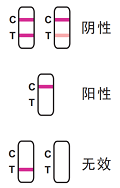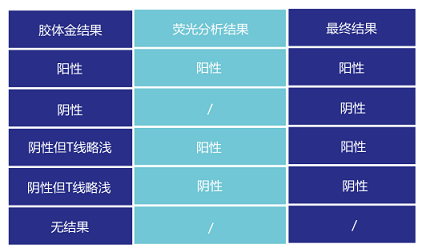



一. Background analysis of hair drug testing services for public officials
1. The hair inspection service for public officials is to take party discipline and government affairs seriously, to strengthen the construction of party conduct and government style, to conscientiously implement the work requirements of the superiors on increasing the strength of drug-related investigation and treatment of public officials, and to purify the ranks of public officials, to maintain a good image of public officials, to further enhance the awareness of drug prohibition, drug prevention and drug resistance, to effectively prevent, detect and investigate drug-related crimes committed by state public officials, and to further purify the ranks of state public officials, hair tests for local public officials are available under a uniform arrangement of the counter-narcotics commission. According to this requirement, the public security departments at all levels have planned to carry out hair inspection services. Our company can assist the public security units to conduct large-scale hair screening services for relevant personnel. In order to promote the county-wide anti-drug work, to further purify the county's ranks of employed and employed personnel, to prevent cadres and workers from participating in drug abuse, drug trafficking, drug production and other situations, and to establish a good image of cadres and workers, combined with the creation of“Non-toxic unit” activities, the development of this program.
1.1Guiding ideology
Guided by the deployment of the County Party Committee and Government on drug control work, the hair drug testing service for public officials is a serious measure to strengthen party discipline and government affairs, earnestly implement the work requirements of higher authorities on increasing the efforts of drug-related investigation and handling among public officials, purify the ranks of public officials, maintain a good image of public officials, further enhance awareness of drug prohibition, prevention, and rejection, effectively prevent, detect, and investigate drug-related illegal and criminal activities among national public officials, and further purify the ranks of public officials. According to the unified arrangements of the Narcotics Control Commission, local public security departments have planned to carry out hair testing services for relevant personnel. Our company can assist public security units in conducting large-scale hair screening services for relevant personnel. In order to effectively promote the county's drug control work, further purify the ranks of in-service and employed personnel in the county, prevent the occurrence of cadres and employees participating in drug use, drug trafficking, drug production, etc., establish a good image of the cadre and employee team, and in line with the "Drug-free Unit" activity, we have developed this plan.
1.2 The guiding ideology is to implement the deployment of the county party committee and government on drug control work, through in-depth investigation and testing of in-service and employed personnel for drug use, mobilize the strength of the whole society to participate in drug control work, gather the hearts of the masses, persist relentlessly, thoroughly eradicate drug harm, and gradually form a large-scale drug control work pattern in which everyone participates and every department cooperates.In drug control and rehabilitation practice, saliva, urine and other samples are the most routine sample types for drug testing. Due to the short cycle of intermediate metabolites of drug use in body fluids, such as 24 hours in saliva, 48 hours in urine, and 24 hours in blood, the variation of drug metabolites, and the limitations of sensitive qualitative detection methods, some drug abusers in society can evade inspection and escape punishment by temporarily stopping drug use. Hair, as a legally recognized biological test sample, has incomparable advantages. The hair follicles around the hair contain a dense network of capillaries. Drugs or medications that exist in the blood enter the hair follicles on the scalp during the hair growth process and are fixed by keratin protein in the hair, and after about 3-5 days, hair containing drugs will grow out of the scalp. Hair grows at a relatively constant rate, and based on this mechanism, one can infer information about the type, time, and amount of drug abuse. This is the significance of "trace" detection. Hair drug trace detection technology also has unique advantages, including long detection time limits, comprehensive drug abuse information, sample resistance to decay, ease of collection, ease of preservation, repeatability of sampling, etc. Among them, the long detection time limit is the most prominent feature.
According to the length of the hair, the drug use history of several weeks to several months can be reflected, and the drug abuse situation of the tested person can be evaluated more comprehensively by combining with urine detection technology, which meets the needs of anti-drug work. In order to solve the various shortcomings in the urine and saliva testing methods used by public security anti-drug police officers for drug addicts, and to provide accurate services for anti-drug combat, in September 2018, the Ministry of Public Security issued Regulation No. 938, "Regulations for Hair Sample Testing of Drug-Related Personnel", which specifies requirements for the extraction, preservation, submission and testing of hair samples of drug-related personnel. Article 9 of the regulation specifically stipulates that the detection threshold values for O6-acetyl morphine, morphine, methamphetamine, amphetamine, 3,4-methylenedioxyamphetamine (MDA), 3,4-methylenedioxymethamphetamine (MDMA), ketamine, phencyclidine, and methadone in hair samples are 0.2 ng/mg, and the detection threshold for cocaine is 0.5 ng/mg. The detection threshold for benzoylecgonine and tetrahydrocannabinol is 0.05 ng/mg. Actual detection values above the threshold are considered positive results.
Currently, the mainstream methods for drug detection on the market can be roughly divided into two categories: chromatography and immunoassay. Chromatography includes gas chromatography, liquid chromatography, and thin layer chromatography, etc. Its advantages are high specificity and sensitivity; the disadvantages are that rapid detection cannot be achieved, and the testing time is about 2 hours. The operation is complex, with many steps, and it is difficult to achieve on-site detection. It requires large equipment and professional personnel to operate. Immunoassay mainly includes enzyme-linked immunosorbent assay (ELISA), colloidal gold method, time-resolved fluorescence analysis method, etc. ELISA has the main advantage of high specificity, but the detection time is long, about 2 hours, and the operation is complex with many steps. It is difficult to achieve on-site detection, and multiple instruments (heating plate, thermostat, and detector, etc.) are required during the testing process.
Immune colloidal gold analysis method applies the principle of competitive binding of various drug conjugates with monoclonal antibodies to quickly qualitatively detect drugs in the sample. However, since the drug in the hair sample is fixed by keratin, it is not easy to precipitate the drug, and it is necessary to use a hair grinding instrument to grind the hair sample before using a colloidal gold hair drug detection reagent for detection. Colloidal gold hair drug detection technology has the advantages of convenience, sensitivity, stability, not requiring special equipment and reagents, and eliminating the need to cut and shred hair. It has the advantages of intuitive result judgment and is particularly suitable for grassroots testing personnel as well as large-scale testing and surveys. The operation is simple: the hair grinding instrument is operated with one button, and the results can be read within thirty seconds of completing the grinding. The detection is fast: the qualitative detection of drugs contained in a single hair sample can be completed within 3 minutes (including sample pretreatment); when processing multiple samples, 100 person-times of qualitative detection can be completed in one hour.
Qualitative accuracy: The drug extraction rate from hair after grinding is over 85%, making colloidal gold qualitative analysis more accurate. High-throughput sample processing: The hair pre-treatment device before grinding can be equipped with various sizes of adapters to simultaneously grind multiple hair samples. Simple interpretation: No special equipment or reagents are required, and the results can be directly judged by the naked eye. Disadvantages: Low sensitivity, with a minimum detection limit of 1.0ng/mg and a narrow detection range, with a certain degree of false negative. (3) Time-resolved fluorescence immunoassay (TRFIA) is a special type of fluorescence analysis developed based on fluorescence analysis (FIA). It uses lanthanide element-labeled antigens or antibodies, measures fluorescence using time-resolved technology based on the luminescence characteristics of lanthanide element chelates, and simultaneously detects both wavelength and time parameters to effectively eliminate non-specific fluorescence interference, greatly improving analysis sensitivity. Fluorescence analysis overcomes the influence of stray light in ordinary ultraviolet-visible spectroscopic analysis by taking advantage of the huge difference between the wavelength of fluorescence and its excitation wavelength. Unlike ordinary spectroscopy, the photodetector and the excitation light are not on the same line, and the excitation light cannot directly reach the photodetector, thus significantly improving the sensitivity of optical analysis. However, when performing ultra-trace analysis, the influence of stray light from excitation light becomes serious. Therefore, the best way to solve the influence of stray light from excitation light is to measure without excitation light. However, the fluorescence lifetime of ordinary fluorescent markers is very short, so the fluorescence disappears when the excitation light disappears. However, there are very few rare earth metals (Eu, Tb, Sm, Dy) with longer fluorescence lifetimes, up to 1-2ms, which can meet measurement requirements. Therefore, time-resolved fluorescence analysis using long-lasting fluorescent markers has emerged as an analysis method in which the fluorescence intensity is measured after the excitation light is turned off. The disadvantage of this method is that it requires a dedicated machine for reading, and the sample requires a certain incubation time. Some drug fluorescence is easily affected by similar interferences. To summarize, colloidal gold and fluorescence analysis can be used as the technical basis for rapid hair testing for hair testing services. II. Introduction to Hair Testing Services 1. Detection methods Currently, colloidal gold and fluorescence immunoassay are mainly used for rapid on-site hair testing. Colloidal gold technology is convenient, fast, specific, sensitive, stable, does not require special equipment and reagents, and eliminates the need for hair cutting. It is particularly suitable for grassroots inspectors and large-scale testing and surveys with direct and intuitive result interpretation. Fluorescence analysis has the advantages of rapid quantitative detection with results obtained within 10 minutes, and high sensitivity with a minimum detection limit of 0.2ng/mg. Combining the two methods provides faster turnaround time and higher accuracy without hair cutting, with each test plate able to operate 24 samples simultaneously, suitable for high-volume tasks with high precision and the ability to provide numerical test results. First, qualitative detection is performed using colloidal gold analysis to quickly obtain results.

2.2.2 Fluorescent Quantitative Detection
Use fluorescent quantitative detection to confirm the positive samples detected by colloidal gold detection.
(1) Print two sets of labels with the same unique number as the label on the positive sample bag, and stick them on the centrifuge tube and the fluorescent reagent plate.
(2) Insert the hair samples in the centrifuge tubes according to the label number, and grind all the centrifuge tubes.
(3) After grinding, add 0.5 ml buffer solution to each centrifuge tube, shake it a few times, use a test tube to suck the solution from the centrifuge tube, and drip3-4 drops into the corresponding number of the liquid hole on the fluorescent detection plate.
(4) Immediately put the plate into a constant temperature incubator and incubate for 5 minutes.
(5) After incubation, insert the reagent plate into the hair drug detection instrument for testing and print the results.
(6) Record the results, collect and organize the test strips.
2.2.3 Result Analysis
